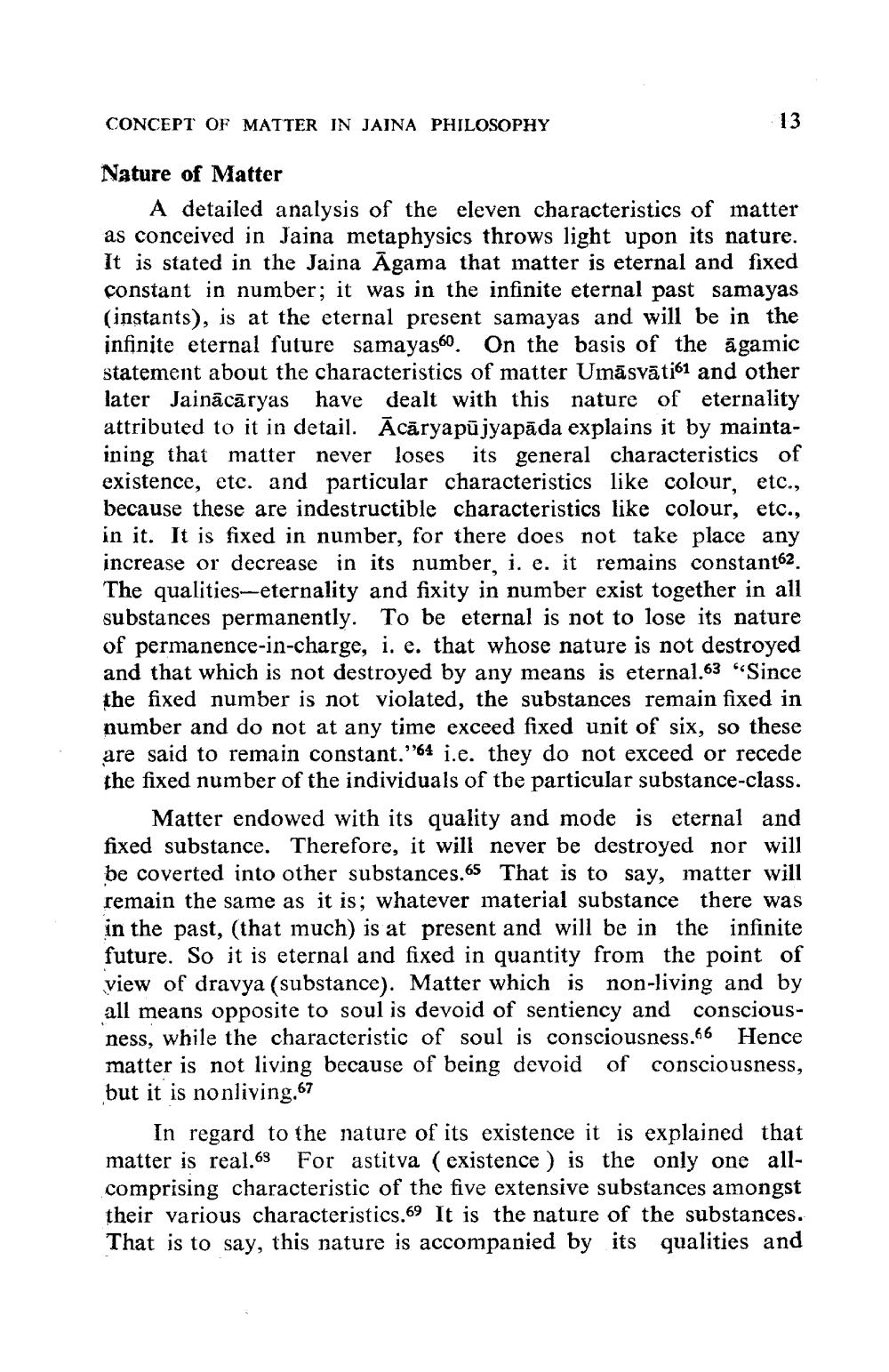________________
13
CONCEPT OF MATTER IN JAINA PHILOSOPHY
Nature of Matter
A detailed analysis of the eleven characteristics of matter as conceived in Jaina metaphysics throws light upon its nature. It is stated in the Jaina Agama that matter is eternal and fixed constant in number; it was in the infinite eternal past samayas (instants), is at the eternal present samayas and will be in the infinite eternal future samayas60. On the basis of the āgamic statement about the characteristics of matter Umāsvāti61 and other later Jainācāryas have dealt with this nature of eternality attributed to it in detail. Ācāryapū jyapāda explains it by maintaining that matter never loses its general characteristics of existence, etc. and particular characteristics like colour, etc., because these are indestructible characteristics like colour, etc., in it. It is fixed in number, for there does not take place any increase or decrease in its number, i. e. it remains constant62 The qualities-eternality and fixity in number exist together in all substances permanently. To be eternal is not to lose its nature of permanence-in-charge, i. e. that whose nature is not destroyed and that which is not destroyed by any means is eternal.63 “Since the fixed number is not violated, the substances remain fixed in number and do not at any time exceed fixed unit of six, so these are said to remain constant.”64 i.e. they do not exceed or recede the fixed number of the individuals of the particular substance-class.
Matter endowed with its quality and mode is eternal and fixed substance. Therefore, it will never be destroyed nor will be coverted into other substances.65 That is to say, matter will remain the same as it is; whatever material substance there was in the past, (that much) is at present and will be in the infinite future. So it is eternal and fixed in quantity from the point of view of dravya (substance). Matter which is non-living and by all means opposite to soul is devoid of sentiency and consciousness, while the characteristic of soul is consciousness.66 Hence matter is not living because of being devoid of consciousness, but it is nonliving, 67
In regard to the nature of its existence it is explained that matter is real.63 For astitva (existence ) is the only one allcomprising characteristic of the five extensive substances amongst their various characteristics.69 It is the nature of the substances. That is to say, this nature is accompanied by its qualities and




